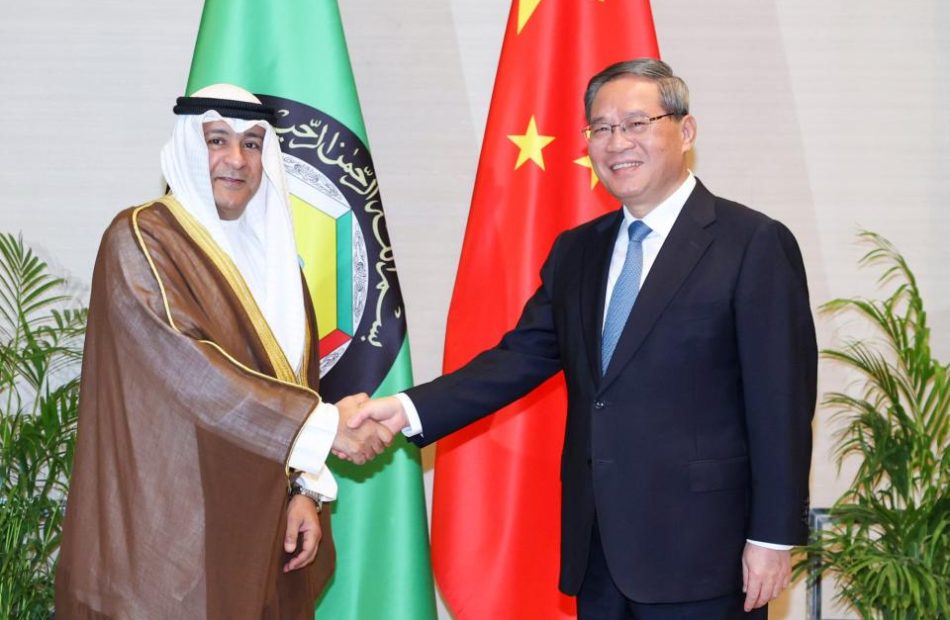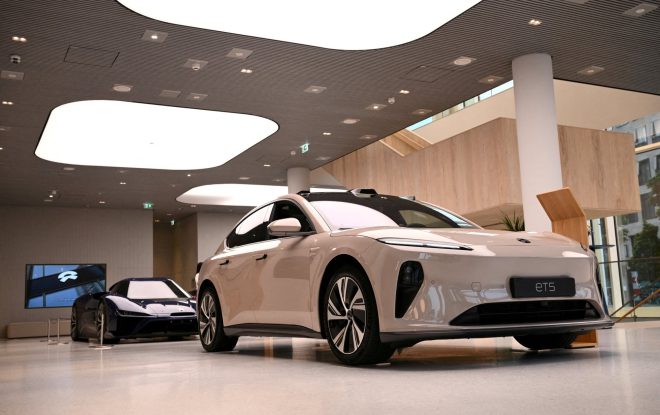Chinese Premier Li Qiang cements ties with Saudi Arabia, UAE, including on new energy
Chinese Premier Li Qiang returned from his visit to Saudi Arabia and United Arab Emirates on Friday after forging closer ties with both Gulf states.
Pledges for closer cooperation included the new energy sector, described by a Chinese analyst as “crucial” to the Middle Eastern economy.
Li travelled to the United Arab Emirates on Wednesday evening after wrapping up a two-day visit to Saudi Arabia. He met UAE President Sheikh Mohamed bin Zayed Al Nahyan in the capital Abu Dhabi the following day, with both leaders pledging to enhance the comprehensive strategic partnership between their countries.
Do you have questions about the biggest topics and trends from around the world? Get the answers with SCMP Knowledge, our new platform of curated content with explainers, FAQs, analyses and infographics brought to you by our award-winning team.
According to a readout from the Chinese foreign ministry, Li called for deeper cooperation in new energy, electric vehicles, high-end manufacturing, biomedicine, digital economy and other fields, and for reinforcing collaboration in investment and traditional sectors like oil and gas.
“The two countries should jointly make a forward-looking layout of emerging industries and future industries, and cultivate more new economic growth points,” Li was quoted as saying during what was his first visit to the UAE since taking office.
His trip came three months after Sheikh Mohamed’s state visit to China and meeting with President Xi Jinping, when both sides vowed closer cooperation, including in cutting-edge technologies.
Cooperation between China and the UAE, a US ally, has reached unprecedented heights in fields ranging from trade and investment to sensitive technology and defence, despite growing scrutiny from Washington.
According to Chinese foreign ministry data, bilateral trade volume reached a record US$50 billion in the first half of this year.
Li began his Middle East trip with a visit to Saudi Arabia, where he met Crown Prince Mohammed bin Salman in Riyadh on Wednesday.
Li called for closer collaboration in traditional sectors such as petrochemicals and infrastructure construction, while broadening cooperation in emerging fields such as new energy, information and communications, and the digital and green economies.
Middle East affairs specialist Wen Shaobiao at the Shanghai International Studies University said that Li’s visit was focused on strengthening economic relations with two wealthy Gulf nations.
“China hopes that deeper economic cooperation between China and these two Gulf states can catalyse and drive such collaborations between China and the Middle East region,” Wen said.
“The expansion of cooperation on electric vehicles (EVs) would capitalise on China’s production strengths and expand its burgeoning EV industry chain further into the Middle East.”
China’s leading EV companies such as BYD and Nio have already entered the UAE market. And last year, the UAE set up the world’s largest single-site solar power plant – a flagship project under Beijing’s Belt and Road Initiative.
China has a marked trade surplus with the UAE, but growing Chinese investments are narrowing the gap. Last year, China’s investments in the UAE increased by more than 16 per cent to US$1.3 billion.
This came as the UAE saw investments in China grow by 120 per cent, accounting for 90 per cent of Arab states’ investments in the country.
The UAE has largely been seen as the first destination in the Middle East for China’s new energy market – a booming industry that has been accused of “overcapacity” and targeted for tariffs by the West.
Li’s trip to Saudi Arabia also touched upon cooperation on new energy, a promising area described by Wen as “crucial” to the regional economy.
“Cooperation in new and green energy is crucial, particularly for the sustainable development and energy transition of Middle Eastern countries. China, which leads in the green energy sector with an extensive industry chain, would bring substantial benefits to the region,” Wen said.
Chinese Premier Li Qiang meets GCC Secretary General Jasem Mohamed Albudaiwi in Riyadh, Saudi Arabia. Photo: Xinhua alt=Chinese Premier Li Qiang meets GCC Secretary General Jasem Mohamed Albudaiwi in Riyadh, Saudi Arabia. Photo: Xinhua>
China has been actively working to strengthen its influence and solidify relationships in the Gulf Cooperation Council (GCC) – made up of Bahrain, Kuwait, Oman, Qatar, Saudi Arabia and the UAE – while seeking to secure a foothold through a free-trade agreement that has been in talks for years.
Li’s trip to Saudi Arabia included a meeting with GCC Secretary General Jasem Mohamed Albudaiwi.
According to a Chinese foreign ministry statement, Albudaiwi said he looked forward to reaching an agreement on the China-GCC free trade agreement “as soon as possible”.
Wen said there were significant motivations for both China and the Gulf countries to conclude the deal.
The Gulf nations aim to diversify their economies beyond reliance on fossil fuels, while the free trade deal with China could be an exemplary project to illustrate the high quality of China’s belt and road strategy, Wen said.
“Given these incentives, it is likely that the trade negotiations will pick up pace soon.”
Addressing a UAE-China business forum during his visit to Abu Dhabi, Li called on both sides to seize the moment to boost the quality of bilateral trade and economic cooperation.
“Companies from both nations should … capitalise on the robust, mutual commitment to bilateral cooperation by engaging in new opportunities brought by the construction of high-quality [belt and road projects],” Li said.
“This will further integrate both countries into the global industrial and supply chains. Additionally, by leveraging the close alignment of bilateral development strategies, businesses can identify potential areas for future collaborations.”
This article originally appeared in the South China Morning Post (SCMP), the most authoritative voice reporting on China and Asia for more than a century. For more SCMP stories, please explore the SCMP app or visit the SCMP’s Facebook and Twitter pages. Copyright © 2024 South China Morning Post Publishers Ltd. All rights reserved.
Copyright (c) 2024. South China Morning Post Publishers Ltd. All rights reserved.





Leave a Reply